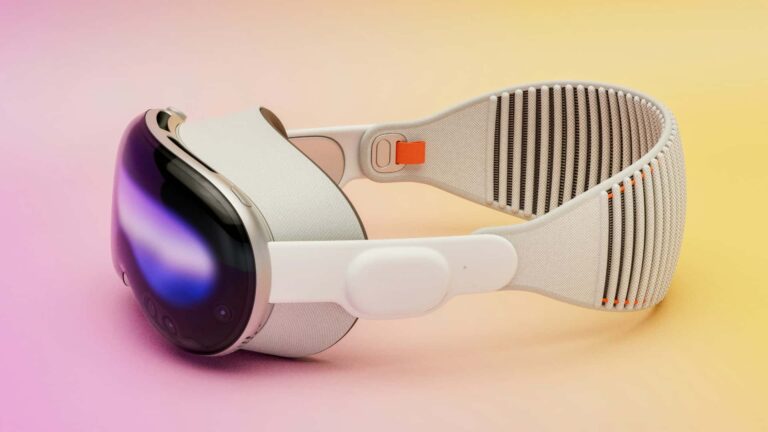
The last decade has seen the adoption of technology in the classroom on an unprecedented scale. From changing the way teachers interact with their students, to evolving how students absorb information, we’re witnessing a digital revolution in classrooms across the globe.
Ludenso has always been at this intersection between education and technology. With years of experience collaborating with educational publishers and bringing textbooks to life, we’ve eagerly anticipated the day we could integrate Apple Vision Pro into our toolkit. It marks a significant leap forward, not just in technology, but in how we approach learning. The depth of immersion offered by Apple Vision Pro far surpasses that of mobile devices, opening new doors for educational applications.
Embracing Vision Pro
Our journey with Apple Vision Pro began with a simple yet profound goal: to transform traditional learning paradigms using the power of spatial computing. We envisioned a world where learning transcends the confines of pages and screens, becoming an immersive, interactive experience.
“A Spatial Tale” is the manifestation of this vision, offering a unique blend of language learning and spatial storytelling. Imagine stepping into an animated 3D fairy tale, surrounded by the sights and sounds of the story, with the ability to switch seamlessly between 15 languages in both text and audio.
New Platforms: The Double-Edged Sword
Developing for a groundbreaking device like Vision Pro presented a double-edged sword. The transition from iOS was smooth, thanks to Apple’s cohesive ecosystem. However, without having the device physically present during development meant we relied heavily on simulators and the invaluable experiences gained from participating in Apple Vision Pro developer labs. These opportunities provided a glimpse into the device’s potential and allowed us to refine our application, ensuring it fully leveraged the capabilities of Vision Pro.
Lessons for Developers
Our endeavors in Vision Pro development yielded several insights. Here are a few worth sharing.
The 3D Imperative
The future of spatial computing lies beyond the 2D plane. Apple Vision Pro’s ability to render immersive 3D environments is unmatched, and tapping into this potential early is crucial for creating compelling applications. In “A Spatial Tale” we ended up combining the use of 2D windows and 3D volumes.
The Power of Audio
In spatial computing, audio is not just an accompaniment but a cornerstone of the immersive experience. Apple Vision Pro’s audio capabilities can significantly enhance user engagement, making it a critical aspect of app development compared to mobile platforms.
Gesture Control as a Paradigm Shift
Traditional input methods have their place – and there will probably be great games for Apple Vision Pro that utilize controllers and productivity apps that require a keyboard, but the intuitive nature of hand gestures opens up a new realm of possibilities for user interaction. “A Spatial Tale” was designed with this in mind, leveraging Apple Vision Pro’s hand-gesture capabilities to create a more natural and engaging user experience.
Collaborating with Tradition
A key highlight of this project was our collaboration with Aschehoug, a publishing house with a rich 150-year history. This partnership allowed us to bridge the gap between traditional storytelling and the cutting-edge technology of spatial computing. Working with seasoned writers and illustrators to bring their creations to life in a 3D space was both challenging and exhilarating, symbolizing a fusion of heritage and innovation.
Advice to Fellow Pioneers
To those embarking on the journey of spatial computing development, remember that the true magic lies in exploring the depths of 3D space. The launch of Apple Vision Pro is not just the advent of a new device but a gateway to a realm brimming with creative possibilities. As we continue to push the boundaries of what’s possible, let’s embrace the opportunity to redefine education and storytelling for the digital age – and don’t get stuck in the 2D windows!
 Harald Manheim is CTO and co-founder of Ludenso.
Harald Manheim is CTO and co-founder of Ludenso.

